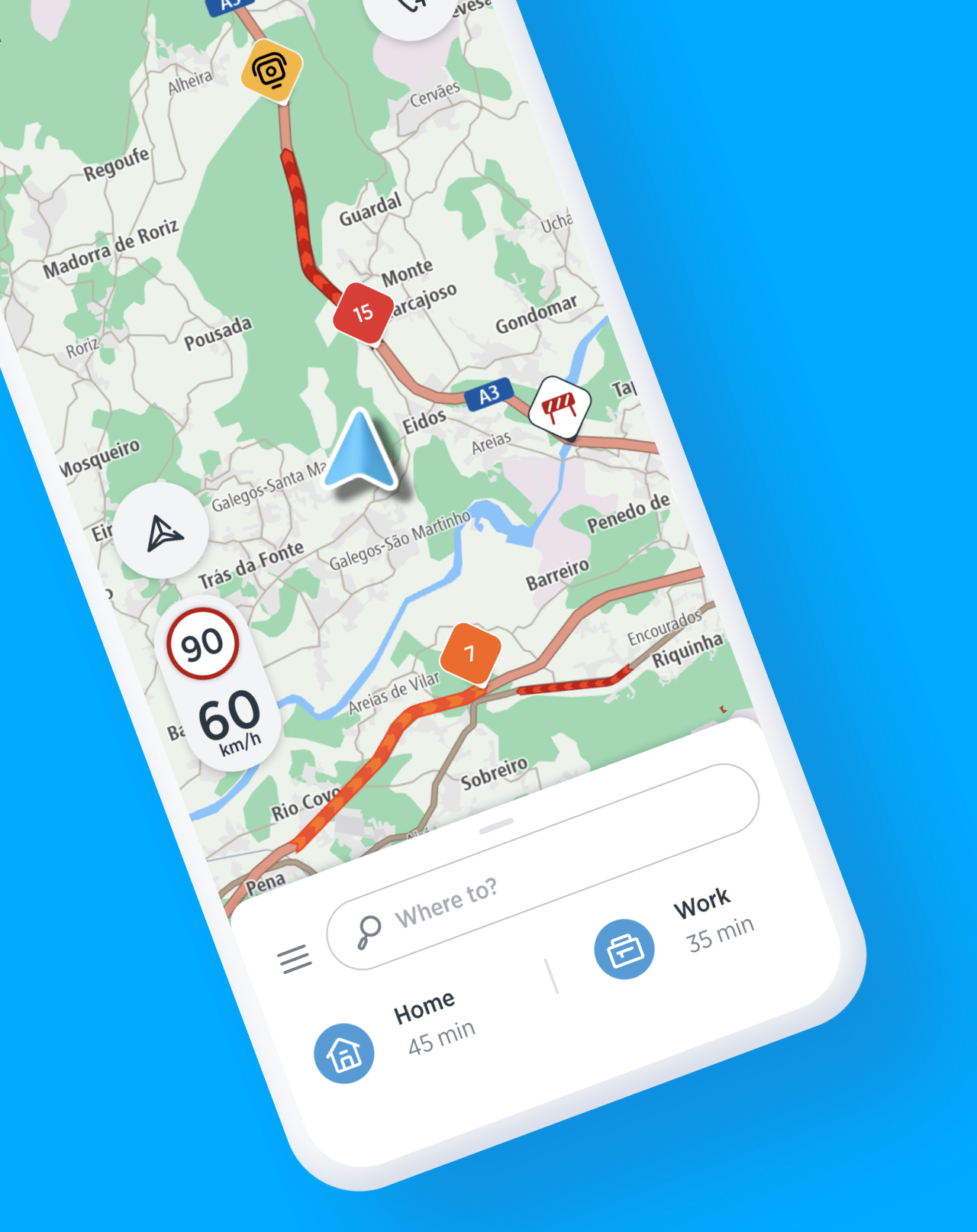
Objetive
The initial goal was to design and developed the brand new traffic and speed camera warnings app by TomTom. The team wanted to detect the main users' needs of commuters and be able to offer a simple companion app for their daily drives.
Business goals
Dog fooding: Test the latest tech from TomTom & provide feedback. Fail fast. Learn fast.
Collecting valuable data: Help internal teams to validate data from real customers in real time
Showcasing TomTom: Grow a sustainable user base with a well rated app.
User experience goals
Safety: Offer a safe while driving navigation experience
Voice first: Develop and implement key voice interactions.
Community input: Allow user to enrich our map data proactively and become a community source live app
User Research
There was a significant amount of preliminary research both qualitative and quantitative to define the main insights and user needs, We collaborate closely with the user research team for around 6 moths in order to validate our concepts and assumptions.
Key activities:
Qualitative research with waze users in Paris.
Driver personas derived from Tim Vink’s quantitative study in EU and US (2017)
Daily Driver explorative studies (interview and drive-along): about routines, values and fears of daily drivers in the US and UK
Daily Driver segmentation framework (2015): 5 types of daily drivers plotted on two personality-based dimensions (explore - control and social - ego)
Quantified insights on type of trips, trip length, navigation habits and pain points of young adults.
Make it stand out.
The activity of driving
Routines are built around the goal of being at the destination on time, and it is unwanted to abort that trusted routine. His smartphone plays a key role: it provides access to information about relevant unusual incidents and it allows communication (reporting) and entertainment during the trip.
Safety first
The smartphone is heavily used during a daily drive, and therefore aspects as battery drain, friction when switching between apps, and complex user interfaces are annoyances to the daily driver. But mainly, not being able to use the smartphone in the car safely and conveniently (avoiding fines) is a key concern of the daily driver.
Multitasking
A big portion of daily drivers is not actively trying to move faster on their routine drives. They do want to receive relevant quality information about their trip. They spend the time in the car in a way that fits the context (the primary task of driving in a busy environment) by e.g. making phone calls or listening to music.
Soft release
After many iterations and prototyping we arrive to an MVP we could developed and deliver covering the main user needs and insights we detect previously, this was a beta release where we ask for beta tester to download the app, drive around and give us as much feedback as they could to be able to learn and iterate.

We launch the first version of the app in Germany and Australia in 2018 and roll it up world wide in 2019 growing an user base of 330k users and maintain an app rating of 4.1 average on both google and apple store

Learnings
The importance of a design system
With the fast and agile delivery of the MVP we rush the design of the UI framework not giving much priority to create a proper design system that could allow more flexibility and components usage.
Glanceability and readability
We design UI panels with a curve that was part of a interesting concept around fitting the speedometer shape under the warnings, this proved a lot of challenges on displaying the information in proper sizes and well justification, we conclude it was important to move on from this shape to improve the information hierarchy and glanceability.
Landscape and dark mode
After conducting surveys on app usage, the data revelled that around 57% of our users sample prefer using the navigation on landscape mode and another 30% manifest the need of a dark theme to improve battery consumption and contrast at night.
The app today
With all the learnings, data and feedback collected we went through a entire refactor of the app in order to building more consistent interfaces and experiences, considering the best usability for each component and user flow.
The impact
Monthly active users: 710K and growing, the goal is to reach 1 million by the end of 2021.
Monthly active drivers: 380K users that drive with the app at least once a day every day.
Community input: Around 400k monthly reports of live incidents on the map like speed cameras and traffic jams.






Up Next
Design system and branding














